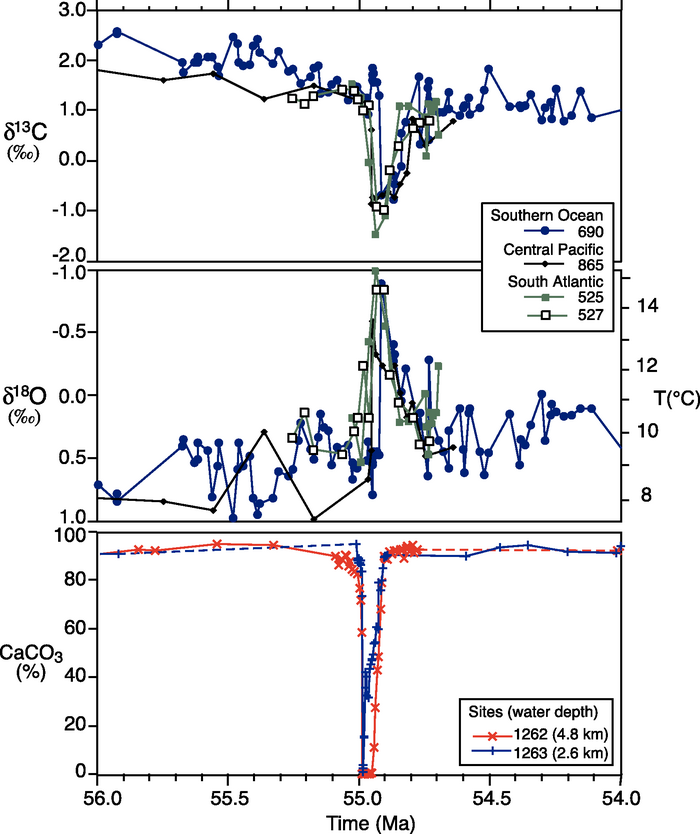
Figure 6.2. The Palaeocene-Eocene Thermal Maximum as recorded in benthic (bottom dwelling) foraminifer (Nuttallides truempyi) isotopic records from sites in the Antarctic, south Atlantic and Pacific (see Zachos et al., 2003 for details). The rapid decrease in carbon isotope ratios in the top panel is indicative of a large increase in atmospheric greenhouse gases CO2 and CH4 that was coincident with an approximately 5°C global warming (centre panel). Using the carbon isotope records, numerical models show that CH4 released by the rapid decomposition of marine hydrates might have been a major component (~2,000 GtC) of the carbon flux (Dickens and Owen, 1996). Testing of this and other models requires an independent constraint on the carbon fluxes. In theory, much of the additional greenhouse carbon would have been absorbed by the ocean, thereby lowering seawater pH and causing widespread dissolution of seafloor carbonates. Such a response is evident in the lower panel, which shows a transient reduction in the carbonate (CaCO3) content of sediments in two cores from the south Atlantic (Zachos et al., 2004, 2005). The observed patterns indicate that the ocean’s carbonate saturation horizon rapidly shoaled more than 2 km, and then gradually recovered as buffering processes slowly restored the chemical balance of the ocean. Initially, most of the carbonate dissolution is of sediment deposited prior to the event, a process that offsets the apparent timing of the dissolution horizon relative to the base of the benthic foraminifer carbon isotope excursion. Model simulations show that the recovery of the carbonate saturation horizon should precede the recovery in the carbon isotopes by as much as 100 kyr (Dickens and Owen, 1996), another feature that is evident in the sediment records.